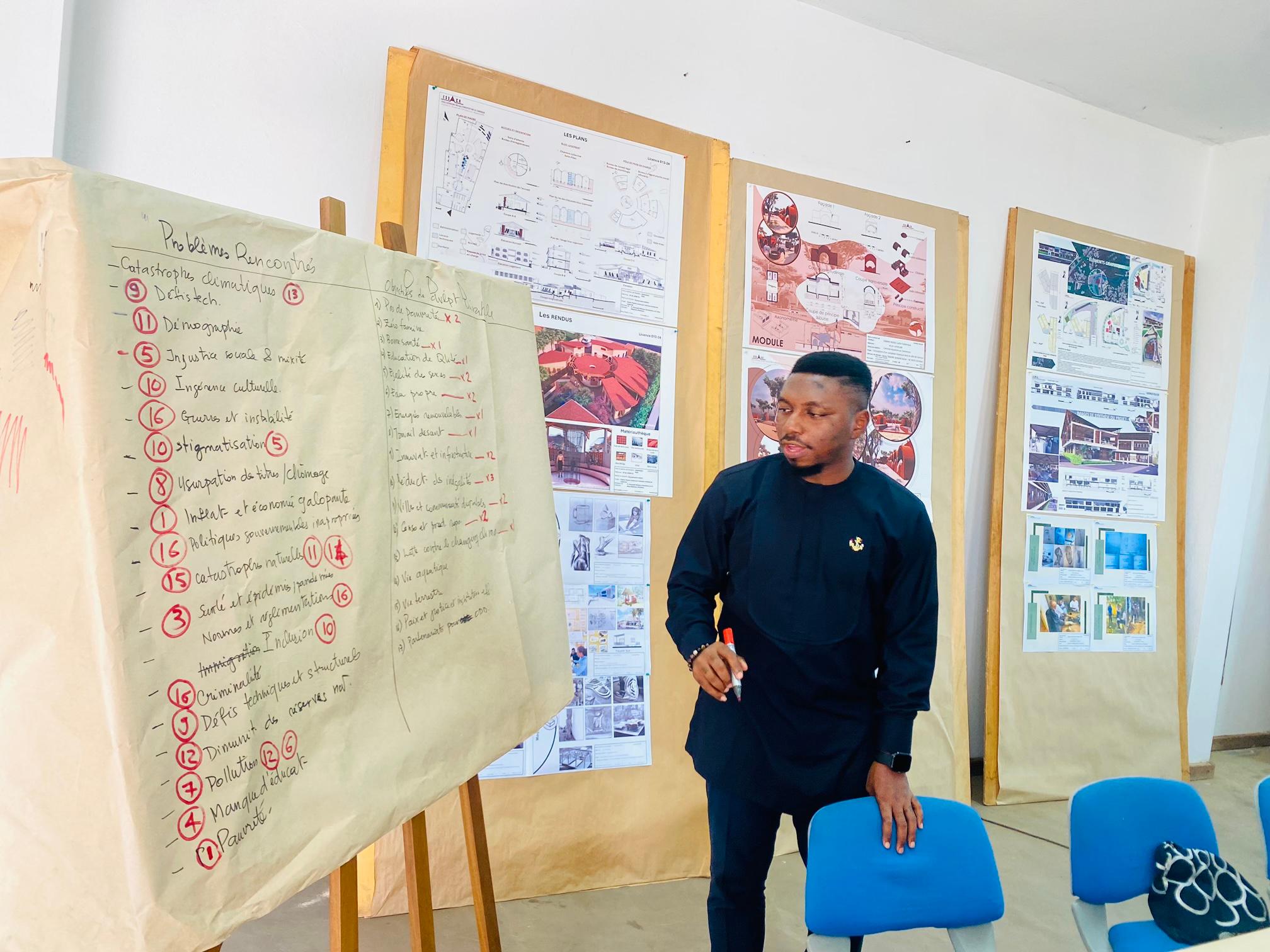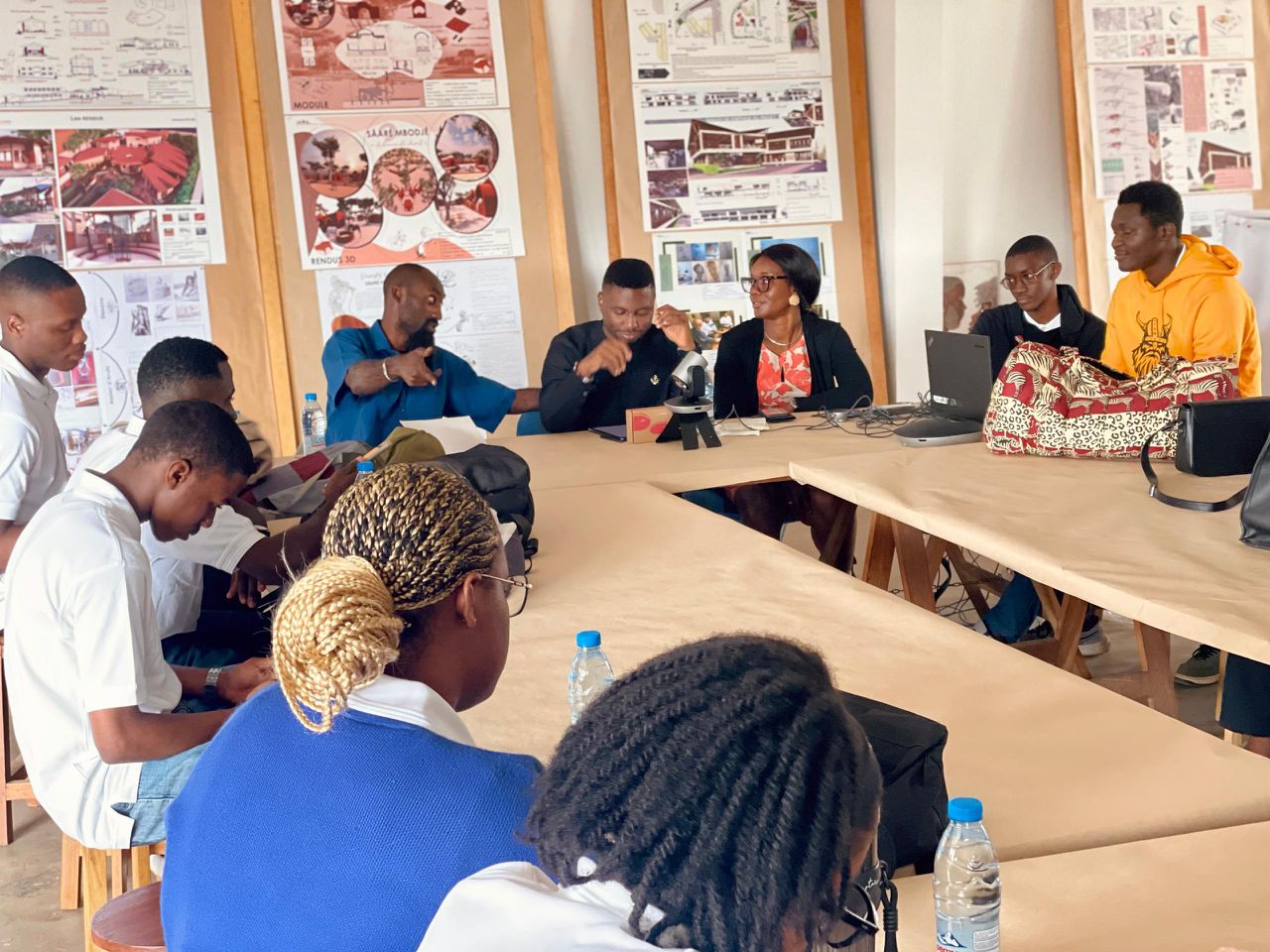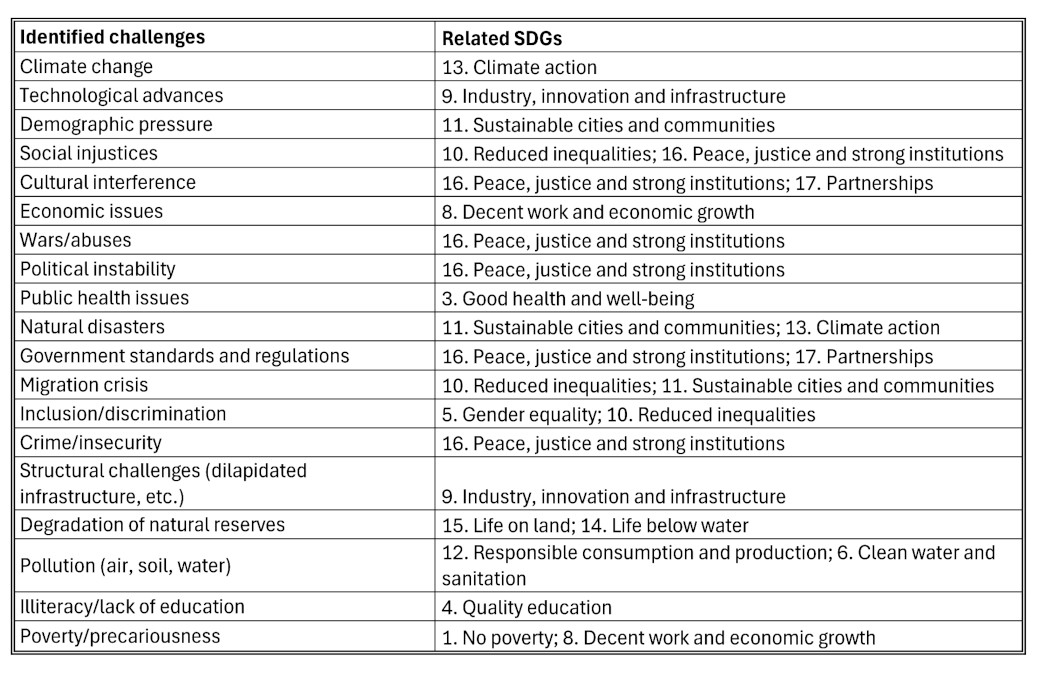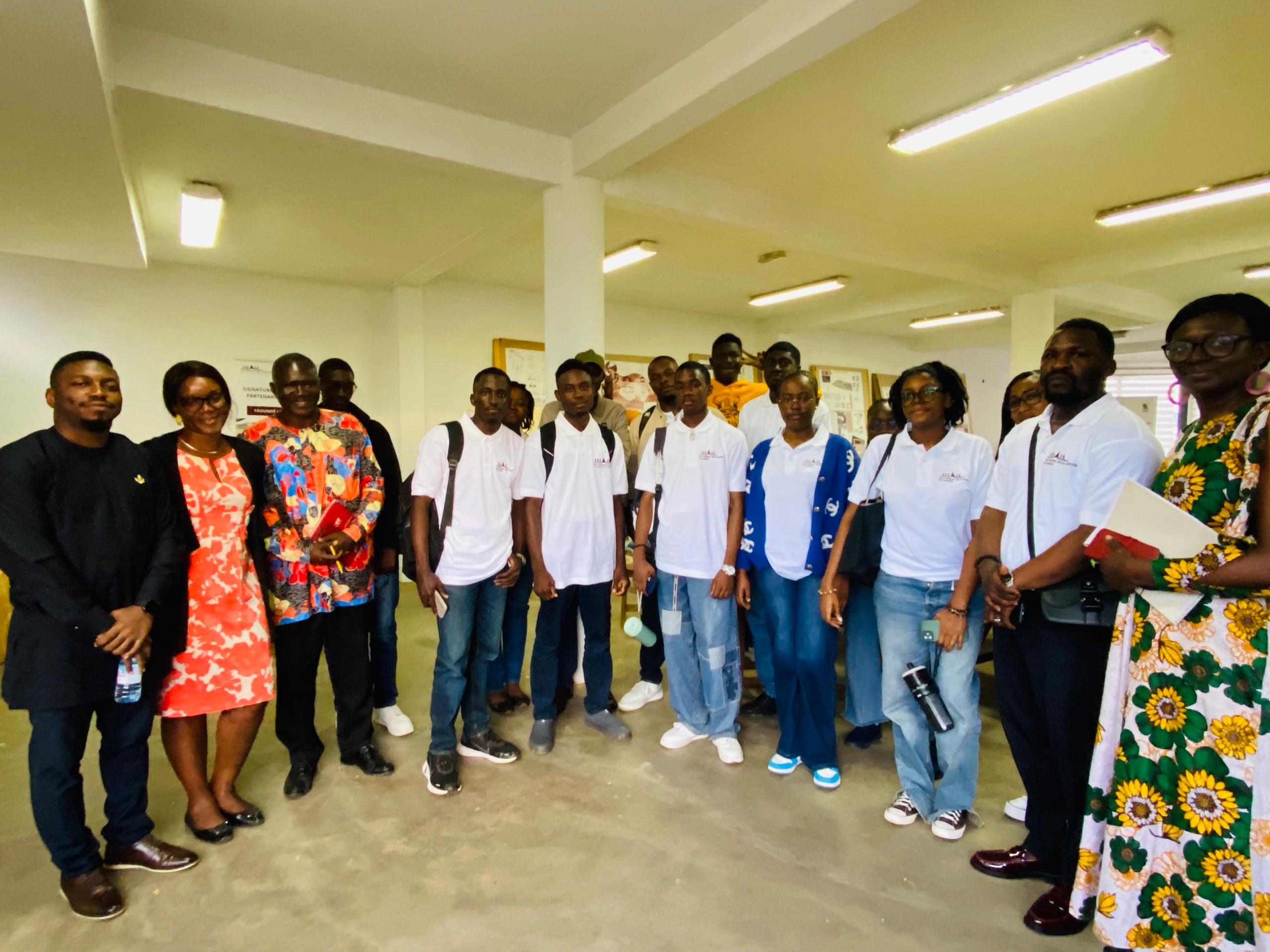Menu

ESSACA on 8 October 2025
In a world facing multifaceted challenges (climate crises, geopolitical tensions, social inequalities, technological transformations), the notion of resilience has become a central concept in contemporary architectural thinking. In this context, a round table discussion organised around the theme ‘Designing Resilience’, in line with the 2025 annual theme of the International Union of Architects (UIA), aimed to initiate a critical and collective reflection on architecture's ability to anticipate, absorb and transform disruptions in a sustainable manner.
This two-hour workshop, which was moderated by architect and teacher Jean-Paul Ndongo, brought together teachers, administrative staff, and students. It provided an interactive learning space in which participants could engage with each other and with the major challenges of sustainable development.
The introductory phase was followed by a brainstorming exercise during which participants identified the main contemporary challenges facing architecture. These challenges include climate change, technological developments, demographic pressure, social inequalities, geopolitical conflicts, cultural interference, natural disasters, public health issues, insecurity, and structural issues such as pollution, poverty, illiteracy, and the degradation of natural reserves.
In an educational and analytical approach, these challenges were then linked to the 17 Sustainable Development Goals (SDGs) adopted by the United Nations as part of the 2030 Agenda. This comparison, presented in the form of a table, made it possible to establish concrete links between current architectural concerns and global sustainable development issues.
These SDGs, which aim to eradicate poverty, protect the planet and ensure prosperity for all by 2030, thus served as a framework for analysing how architecture can contribute to sustainable, inclusive and resilient transformations of territories.

The workshop focused on two key areas:
1. Defining the concept of resilience:
First, participants explored the different meanings of the term ‘resilience’. After a technical explanation — as the ability of a material to withstand impact — the concept was transposed to the scale of architecture.
Definition adopted: In architecture, resilience refers to the ability of a building or infrastructure to withstand disruptions (natural disasters, climate crises, conflicts, etc.), to maintain its functionality before, during and after the event, and then to adapt to become more sustainable. This implies a sustainable, intelligent design that is adapted to the local context.
2. Brainstorming exercise:
A collective discussion identified, in a non-exhaustive manner, the main contemporary challenges facing architecture. These challenges were then linked to the 17 Sustainable Development Goals (SDGs) adopted by the UN as part of the 2030 Agenda.

The round table discussion ‘Designing Resilience’ raised students' awareness of the systemic dimension of contemporary architectural issues, highlighting the close links between resilience and sustainable development. The exercise of matching the identified challenges with the 17 Sustainable Development Goals (SDGs) was an effective educational tool for contextualising architectural practice within a global, ethical and forward-looking framework.
Beyond simply imparting knowledge, this workshop, in addition to being an opportunity to make contacts, engaged all the students (future architects) and encouraged a critical, participatory and interdisciplinary approach, preparing them to design projects rooted in the realities of their time, while integrating the values of sustainability, adaptability and equity. This type of initiative illustrates the importance of anchoring architectural training in the frameworks of reflection proposed by major international agendas, such as the UN's Agenda 2030.
